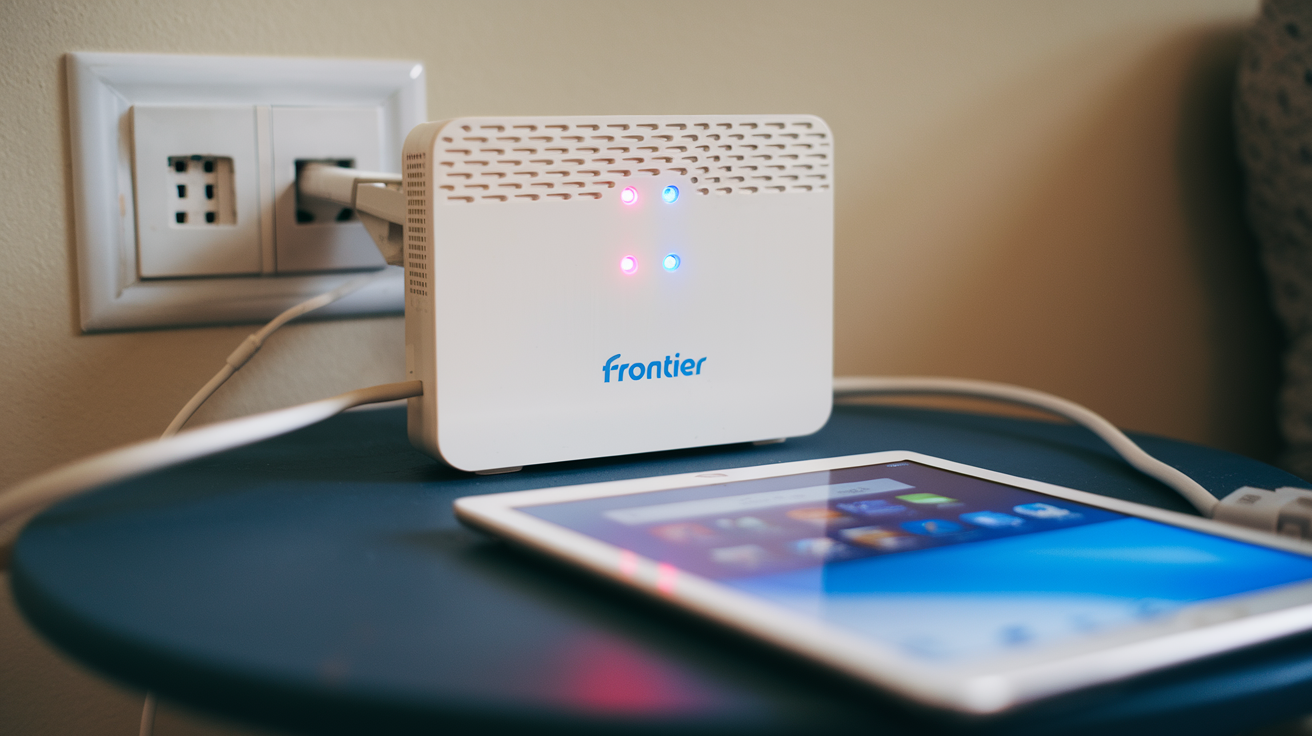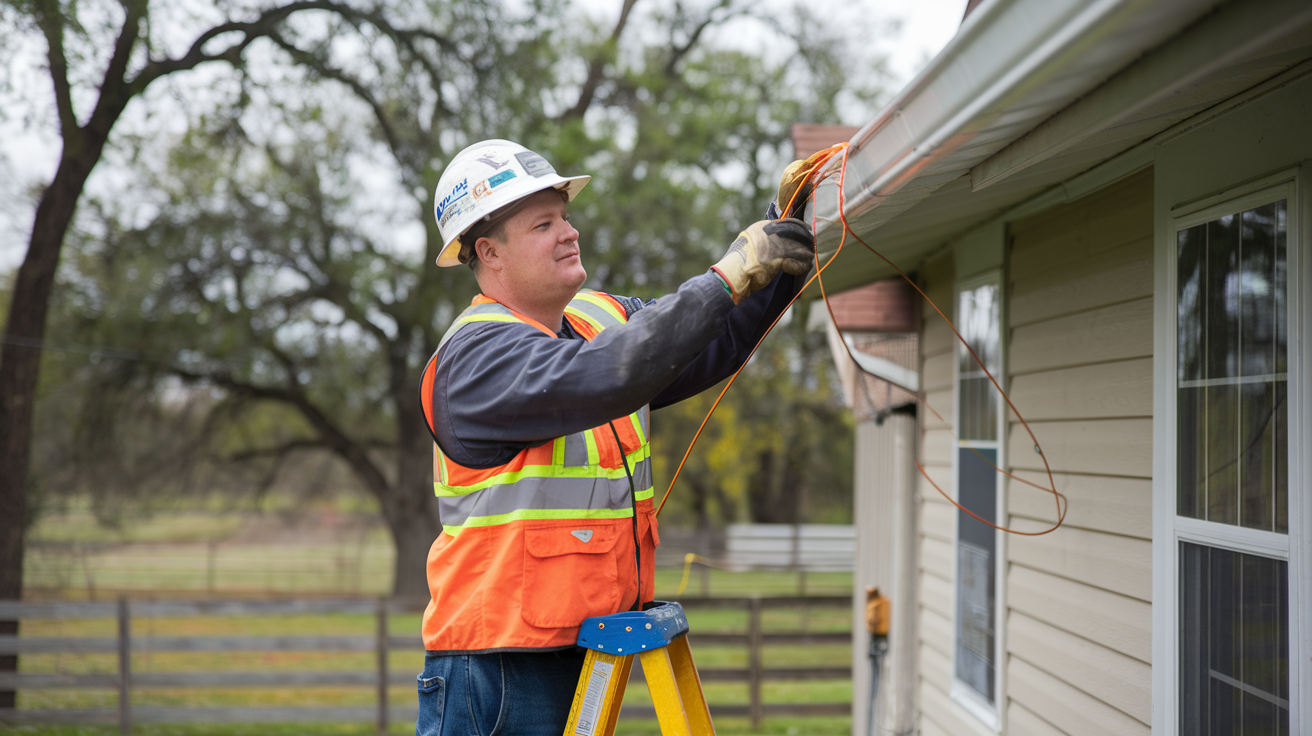
In today’s connected world, choosing the right internet plan is crucial for seamless streaming, gaming, remote work, and more. Frontier Internet, a leading provider in the U.S., offers a variety of plans to meet diverse needs, from budget-friendly options to ultra-fast fiber connections. With speeds ranging from 200 Mbps to an impressive 7,000 Mbps, Frontier’s plans cater to everyone from casual browsers to power users. But which plan is the best fit for your household? This comprehensive guide breaks down Frontier’s 2025 internet plans, their features, pricing, and how to choose the one that suits your needs. We’ll also compare Frontier to competitors, share customer insights, and answer common questions to help you make an informed decision.
Introduction to Frontier Internet
Frontier Communications, a major internet service provider (ISP) in the U.S., serves over 25 states with both fiber optic and DSL internet services. Its fiber plans are the highlight, offering high-speed, reliable connections with symmetrical upload and download speeds. Frontier is actively expanding its fiber network, aiming to reach 10 million locations by the end of 2025, bringing fast internet to more rural and underserved areas. With no data caps, free Wi-Fi routers, and no contracts, Frontier provides flexibility and value. However, availability varies by location, and customer experiences differ, particularly between fiber and DSL services. Let’s dive into the details of Frontier’s plans to help you find the best one for you.
Frontier Internet Plans for 2025
Frontier offers a range of internet plans, primarily focusing on fiber optic technology, with DSL as a fallback in areas where fiber isn’t available. Below is a detailed overview of Frontier’s plans as of July 2025, based on data from CableTV.com and HighSpeedInternet.com:
|
Plan Name |
Price (for 12 months) |
Download Speed |
Upload Speed |
Internet Type |
Key Features |
|---|---|---|---|---|---|
|
Fiber 200 |
$29.99/mo.* |
200 Mbps |
200 Mbps |
Fiber |
Ideal for small households; includes free Amazon Eero router |
|
Fiber 500 |
$44.99/mo.* |
500 Mbps |
500 Mbps |
Fiber |
Best for families; great for streaming, gaming, and moderate work-from-home use |
|
Fiber 1 Gig |
$64.99/mo.* |
1,000 Mbps |
1,000 Mbps |
Fiber |
Perfect for larger families; includes free Amazon Eero Pro 6 router |
|
Fiber 2 Gig |
$99.99/mo.* |
2,000 Mbps |
2,000 Mbps |
Fiber |
Designed for power users; excellent for gaming, 4K streaming, and large file transfers |
|
Fiber 5 Gig |
$129.99/mo.* |
5,000 Mbps |
5,000 Mbps |
Fiber |
Ultra-fast speeds; includes free TP-Link Archer AXE300 6E router |
|
Fiber 7 Gig |
$199.99/mo.* |
7,000 Mbps |
7,000 Mbps |
Fiber |
Frontier’s fastest plan; ideal for businesses or very large households |
|
Frontier Internet (DSL) |
$64.99/mo.* |
Varies (not speed-tiered) |
Varies |
DSL |
Legacy option; slower speeds, not recommended for heavy users |
*Prices include a $10/mo. Auto Pay & Paperless Bill discount. Offers and availability may vary by location and are subject to change.
Key Features of Frontier Plans
-
No Data Caps: All plans offer unlimited data, perfect for streaming, gaming, and downloading without worrying about overage fees.
-
Free Wi-Fi Router: Every fiber plan includes a free router, with higher-tier plans offering advanced models like the Amazon Eero Pro 6 or TP-Link Archer AXE300 6E for superior Wi-Fi performance.
-
No Contracts: Frontier’s plans are contract-free, allowing you to switch or cancel without early termination fees. However, some promotions (e.g., gift cards) may require a 12-month agreement.
-
Installation: Fiber plans typically include free professional installation, which takes 4–6 hours. DSL plans may incur a $100 installation fee, though self-installation is sometimes available.
-
Promotions: Frontier offers deals like a $200 Visa Reward Card for the Fiber 5 Gig plan, $120/year savings on YouTube TV bundles, and free routers for higher-tier plans.
-
Additional Fees: Avoid extra costs like a $10/mo. No-AutoPay fee or $2.99/mo. The paper bill fee is waived by opting for digital billing and AutoPay.
DSL vs. Fiber
Frontier’s fiber plans are highly recommended over DSL due to their superior speed, reliability, and symmetrical performance. DSL, a legacy technology, uses copper phone lines and offers inconsistent speeds, often below 100 Mbps. If fiber is available in your area, it’s the better choice for modern internet needs.
Why Choose Fiber Internet?
Fiber optic internet, like Frontier’s offerings, has significant advantages over DSL or cable:
-
Speed: Fiber delivers speeds up to 7,000 Mbps, far surpassing DSL or cable’s capabilities.
-
Symmetrical Speeds: Equal upload and download speeds are ideal for video conferencing, cloud backups, and content creation.
-
Reliability: Fiber is less susceptible to weather interference or signal degradation, ensuring consistent performance.
-
Future-Proofing: Fiber can handle increasing bandwidth demands as technology evolves, making it a long-term investment.
Frontier’s fiber plans are designed to meet the demands of today’s digital households, from streaming 4K content to powering smart homes.
How to Choose the Best Frontier Plan
Selecting the right Frontier Internet plan depends on your household’s size, internet usage, budget, and availability. Here’s a detailed guide to help you decide:
1. Household Size and Devices
-
Small Households (1–2 people, 1–5 devices): The Fiber 200 plan ($29.99/mo.) is sufficient for basic browsing, email, and occasional streaming. It supports a few devices without slowdowns.
-
Medium Households (2–4 people, 5–10 devices): The Fiber 500 plan ($44.99/mo.) is ideal for families with multiple devices, supporting HD streaming, casual gaming, and remote work.
-
Large Households (4+ people, 10+ devices): The Fiber 1 Gig plan ($64.99/mo.) ensures smooth performance for multiple streamers, gamers, or remote workers, even during peak usage.
-
Power Users or Businesses (10+ devices, heavy usage): The Fiber 2 Gig, 5 Gig, or 7 Gig plans ($99.99–$199.99/mo.) are perfect for content creators, gamers, or small businesses needing ultra-fast speeds.
2. Internet Usage
-
Basic Activities (Browsing, Email, SD Streaming): Fiber 200 is more than enough for light users.
-
Moderate Activities (HD Streaming, Casual Gaming, Remote Work): Fiber 500 or 1 Gig handles multiple devices and bandwidth-intensive tasks.
-
Heavy Usage (4K Streaming, Competitive Gaming, Large File Transfers): Fiber 2 Gig or higher ensures lag-free performance for demanding applications.
3. Budget
-
Frontier’s plans start at $29.99/mo, making them affordable for most budgets. The Fiber 500 plan offers the best balance of speed and cost for most households. If budget is a concern, avoid DSL plans, as they’re priced similarly to Fiber 1 Gig but offer inferior performance.
4. Availability
-
Frontier’s fiber internet is available in select areas across 25 states, including Alabama, Arizona, California, and more. DSL is more widely available but less reliable. Check availability at frontier.com by entering your address.
5. Future-Proofing
-
If you expect your internet needs to grow (e.g., adding smart devices or starting a home business), consider a higher-tier plan like Fiber 1 Gig or 2 Gig to avoid future upgrades.
6. Additional Considerations
-
Wi-Fi Coverage: Larger homes may benefit from Frontier’s whole-home Wi-Fi add-on ($10/mo), which includes mesh devices to eliminate dead zones.
-
Bundling: Save $120/year by bundling with YouTube TV or add a home phone plan for enhanced connectivity.
By evaluating these factors, you can choose a plan that aligns with your current and future needs. Frontier’s availability checker and two-minute quiz on their website can further guide your decision.
Maximizing Your Frontier Internet Experience
To get the most out of your Frontier Internet plan, consider these tips:
-
Optimize Wi-Fi Placement: Place your router centrally, away from walls or obstructions, to maximize coverage. For larger homes, add Frontier’s whole-home Wi-Fi for $10/mo.
-
Secure Your Network: Use strong passwords and enable WPA3 encryption to protect against unauthorized access.
-
Prioritize Bandwidth: Use Quality of Service (QoS) settings on your router to prioritize critical tasks like video calls or gaming.
-
Update Equipment: Keep your router’s firmware and devices’ software updated for optimal performance.
-
Monitor Usage: While Frontier has no data caps, tracking usage can help you assess if your plan meets your needs.
-
Leverage Promotions: Take advantage of deals like the $200 Visa Reward Card for Fiber 5 Gig or YouTube TV discounts.
Comparison with Competitors
To determine if Frontier is the best choice, here’s how it stacks up against major ISPs:
-
Spectrum:
-
Plans: $30/mo. fFor100 Mbps, $50/mo. For 500 Mbps, $70/mo. For 1 Gig.
-
Comparison: Frontier’s Fiber 1 Gig ($64.99/mo.) is cheaper than Spectrum’s 1 Gig and offers symmetrical speeds, which Spectrum lacks. Spectrum has broader availability across 41 states.
-
Strengths: Spectrum’s wider coverage and consistent cable performance.
-
Weaknesses: No symmetrical speeds; higher post-promo prices.
-
-
AT&T Fiber:
-
Plans: $55/mo. For 300 Mbps, $75/mo. For 1 Gig, $180/mo. For 5 Gig.
-
Comparison: Frontier’s plans are more affordable for similar speeds (e.g., Fiber 5 Gig at $129.99/mo vs. AT&T’s $180/mo.. AT&T may have better customer service ratings (3.9/5 vs. Frontier’s 3.6/5).
-
Strengths: AT&T’s reliability and customer support.
-
Weaknesses: Higher pricing for top-tier plans.
-
-
Verizon Fios:
-
Plans: $49.99/mo. For foFor00 Mbps, $64.99/mo. For 500 Mbps, $94.99/mo. For 940 Mbps.
-
Comparison: Verizon’s plans are competitive for lower speeds, but Frontier offers faster options (up to 7 Gbps) for power users.
-
Strengths: Verizon’s strong customer satisfaction and fiber reliability.
-
Weaknesses: Limited to select regions, primarily the Northeast.
-
Frontier’s fiber plans are a strong value proposition for speed and price, especially for high-bandwidth users. However, if fiber isn’t available, competitors like Spectrum may offer more consistent coverage.
Customer Reviews and Satisfaction
Frontier’s customer satisfaction ratings for 2024 (likely similar for 2025) provide insight into real-world performance:
-
Overall Satisfaction: 3.5/5 (12th out of 15 providers)
-
Reliability: 3.5/5
-
Customer Service: 3.6/5
-
Speed: 3.6/5
-
Price: 3.4/5
Positive Feedback
-
“Frontier Fiber is a game-changer. Streaming 4K on multiple devices is seamless, and uploads are just as fast.” – John D.
-
“The installation was quick, and the technician was professional. No issues so far!” – Sarah M.
Negative Feedback
-
“Customer service was frustrating; it took weeks to fix a billing issue.” – Mike T.
-
“DSL is too slow for my needs. I wish fiber were available in my area.” – Lisa K.
Frontier’s fiber plans generally receive higher praise than DSL, which drags down overall satisfaction scores. If fiber is available, you’re likely to have a better experience. Frontier’s customer service has improved, with a 2024 ACSI score of 74/100, but it still lags behind top providers like AT&T or Verizon.
Frontier’s Expansion Plans
Frontier is committed to expanding its fiber network, targeting 10 million locations by the end of 2025. This initiative aims to bring high-speed internet to rural and underserved areas, making fiber more accessible. If you’re currently limited to DSL, check back periodically, as fiber may become available in your area soon.
FAQs
1. How do I check if Frontier Internet is available in my area?
Visit frontier.com and use the availability checker by entering your address.
2. What equipment do I need for Frontier Internet?
Frontier provides a free Wi-Fi router with every plan, such as the Amazon Eero for Fiber 200–2 Gig or TP-Link Archer AXE300 6E for Fiber 5 Gig and 7 Gig.
3. Are there any installation fees?
Fiber plans typically include free professional installation. DSL plans may have a $100 fee, though self-installation is sometimes available.
4. Does Frontier offer any discounts or promotions?
Yes, Frontier offers promotions like a $200 Visa Reward Card for Fiber 5 Gig, $120/year savings on YouTube TV bundles, and free routers for higher-tier plans.
5. How does Frontier’s customer service compare to other providers?
Frontier’s customer service scores 3.6/5, matching the national average but trailing behind top providers like AT&T (3.9/5) or Verizon (4.0/5).
6. Can I bundle Frontier Internet with TV or phone services?
Yes, Frontier offers bundles with YouTube TV (save $10/mo. for 12 months) and home phone services for additional savings.
7. Is Frontier’s DSL service worth it?
DSL is slower and less reliable than fiber, so it’s only recommended if fiber isn’t available. Consider competitors like Spectrum if fiber isn’t an option.
8. What is Frontier’s whole-home Wi-Fi add-on?
For $10/o., this add-on includes mesh Wi-Fi devices to extend coverage and eliminate dead zones in larger homes.
Conclusion
Frontier Internet offers a compelling lineup of plans for 2025, with fiber options ranging from 200 Mbps to 7,000 Mbps. The Fiber 500 plan at $44.99/mo. It is the best value for most households, balancing speed and affordability for families and moderate users. Power users will appreciate the ultra-fast Fiber 2 Gig, 5 Gig, or 7 Gig plans, while budget-conscious users can opt for Fiber 200. With no data caps, free routers, and no contracts, Frontier provides flexibility and value. However, availability is limited to 25 states, and customer service experiences vary. Check availability at frontier.com to find the best plan for your needs and enjoy a fast, reliable internet connection tailored to your lifestyle.






